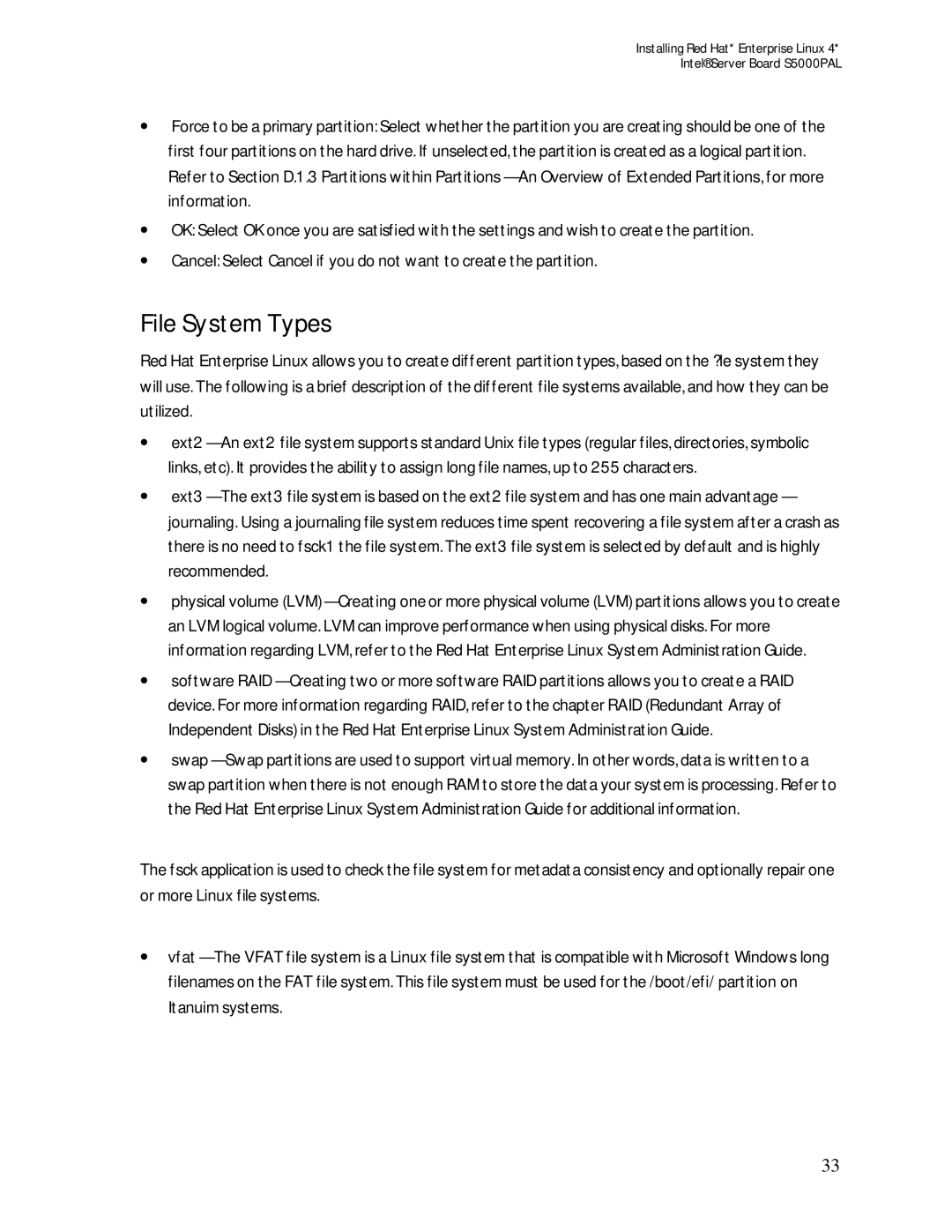Installing Red Hat* Enterprise Linux 4*
Intel® Server Board S5000PAL
∙Force to be a primary partition: Select whether the partition you are creating should be one of the first four partitions on the hard drive. If unselected, the partition is created as a logical partition. Refer to Section D.1.3 Partitions within Partitions — An Overview of Extended Partitions, for more information.
∙OK: Select OK once you are satisfied with the settings and wish to create the partition.
∙Cancel: Select Cancel if you do not want to create the partition.
File System Types
Red Hat Enterprise Linux allows you to create different partition types, based on the ?le system they will use. The following is a brief description of the different file systems available, and how they can be utilized.
∙ext2 — An ext2 file system supports standard Unix file types (regular files, directories, symbolic links, etc). It provides the ability to assign long file names, up to 255 characters.
∙ext3 — The ext3 file system is based on the ext2 file system and has one main advantage — journaling. Using a journaling file system reduces time spent recovering a file system after a crash as there is no need to fsck1 the file system. The ext3 file system is selected by default and is highly recommended.
∙physical volume (LVM) — Creating one or more physical volume (LVM) partitions allows you to create an LVM logical volume. LVM can improve performance when using physical disks. For more information regarding LVM, refer to the Red Hat Enterprise Linux System Administration Guide.
∙software RAID — Creating two or more software RAID partitions allows you to create a RAID device. For more information regarding RAID, refer to the chapter RAID (Redundant Array of Independent Disks) in the Red Hat Enterprise Linux System Administration Guide.
∙swap — Swap partitions are used to support virtual memory. In other words, data is written to a swap partition when there is not enough RAM to store the data your system is processing. Refer to the Red Hat Enterprise Linux System Administration Guide for additional information.
The fsck application is used to check the file system for metadata consistency and optionally repair one or more Linux file systems.
∙vfat — The VFAT file system is a Linux file system that is compatible with Microsoft Windows long filenames on the FAT file system. This file system must be used for the /boot/efi/ partition on Itanuim systems.
33
